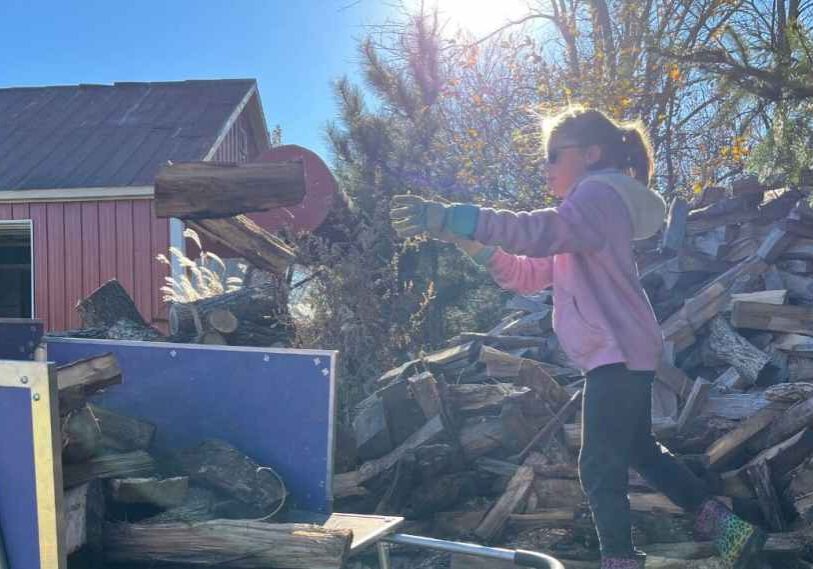Essay | Less-Work Gardening
How to bring the enjoyment back to tending your gardens

CANTON TOWNSHIP, FILLMORE COUNTY — I’m kneeling on the grass beside the garden, in a trance as I tug out weeds around the basil seedlings. Handfuls of weeds are laid down beside the basil to provide mulch and give sun back to my crop. My mind goes to that place we used to call “Be Here Now.” Just me, pulling weeds—it is real work, and it is also soothing.
There is no doubt that gardening can be hard. I have read that some folks hire a gardener to put in vegetable gardens for them to harvest later. Apparently, you can pay someone else to work your garden… But can you plant it and forget it? Forget it.
There is no such thing as a maintenance-free garden. The trick is to make the work more enjoyable. I use several schemes to avoid garden drudgery.
- Don’t dig. I start new garden space by laying cardboard or thick newspapers right over the grass, topped off with a few inches of whatever mulch is available. Shredded bark, grass clippings, leaves, hay or straw all make nice mulch if it is thick enough to suppress seeds beneath. After a few months, the grass and weeds break down and the soil is soft. Then I poke new plants into the mulch. In fact, the only real digging I do with a shovel is when I drop seed potatoes into holes in spring and then dig up the finished crop in the fall.
- Prepare your existing garden beds in the fall. Again, don’t bother to dig—just pile leaves, grass clippings, dead flower stalks and spent vines over the soil. Weeds can’t germinate or grow without light, so let the mulch smother them all winter long. Then next spring, you’ll be amazed at the quality of the soil when you rake off the remains.

A work-in-progress garden with cardboard laid down to minimize weeds and create more garden space. (Photo by Loni Kemp)
- As we get older, why not go further? Make your paths permanent. Scrounge heavy cardboard topped with ground bark to lay over the path, and it will hold down weeds at least one year. My favorite shortcut is to scrounge old carpet strips and lay down permanent paths. Then just flip the carpet the next spring, and you can prevent weeds for many years. I have flipped some of my carpet strips for thirty years!
- Locate new plants fairly close together. I like my flowers and vegetables to flow together so that almost no soil shows, and thus weeds are shaded out. As you harvest vegetables, more room is made for neighboring plant growth.
- Deadhead often. This may sound gruesome, but it simply means snipping or pinching off a flower as soon as it is done blooming. It makes everything look better and grow better, but the real benefit is that it prevents seeds from dropping to become next year’s weeds. Some of my worst weeds were once my own flowers that took over: lady bells, poppies, dill and amaranth, to name a few.
- On the other hand, some creeping plants do us a favor by moving along slowly, year by year in a group, leaving their spent roots to rot away. Red monarda and gooseneck loosestrife are beautiful, even if they won’t stay put.
- Tune in to the little chores that are easy when you catch them early, and such a nightmare if you let them go too long. Staking and tying up a plant before it grows too tall and flops is a cinch compared to the nightmare of trying to gather up a monstrous peony or nepeta. Vines like clematis and climbing peas should be tied up to the trellis right away.
Take a stroll through your garden every day if you can.
Face it, this is the fun part! You don’t want to miss the peak of perfection of a tall white lily, or the one-day bloom of a fire engine red daylily.
In fact, my favorite midsummer task is strolling through the morning garden, pinching off each of yesterday’s wilted daylilies, so I can reveal the perfection of today’s new flowers. Just me in relationship with my garden brings real work — and gentle rewards.






